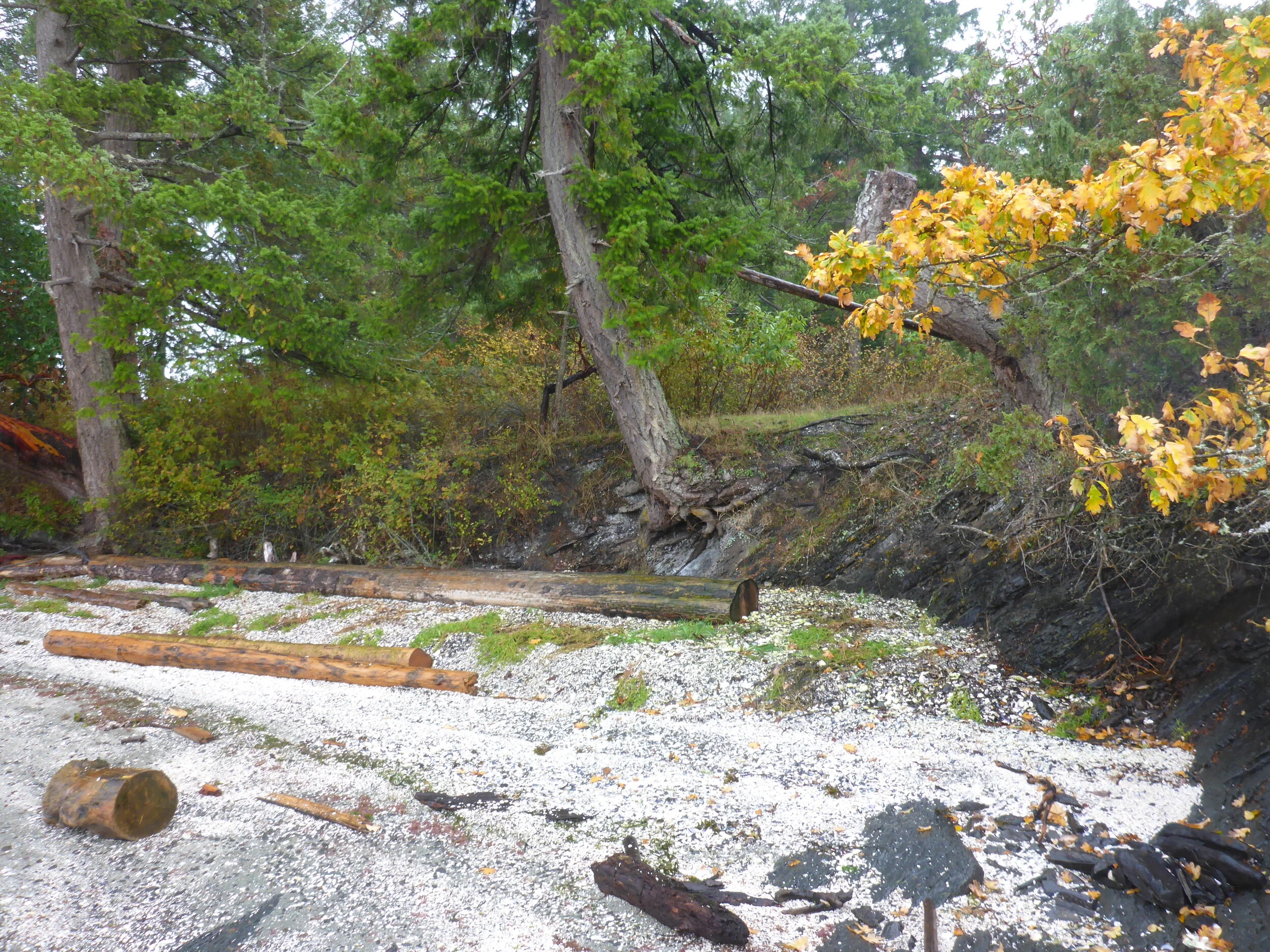From unpredictable weather, changing coastlines, and wildfires, we’re experiencing challenges that recent generations have not faced before. Archaeology is not immune to these changes, and as archaeologists, we’re discovering many occurrences where archaeological sites are being affected by climate change.
Past Dig It columns have reviewed melting glaciers in alpine environments, and how archaeological sites, often with well-preserved bone and wood tools, are being uncovered, or, how archaeologists and Indigenous communities are surveying and assessing the impact of wildfires on archaeological sites. These valuable studies are ongoing, but it’s proving difficult to keep up with the rapid changes to our landscapes. A broader, more cohesive approach to managing the effects of climate change to archaeological sites has not yet been developed, but is necessary, likely, as we observe increasingly rapid changes.
Earlier this year, Parks Canada hosted a workshop to advance the understanding of climate impacts to cultural resources in B.C. and how the archaeological industry is or should adapt to the changes. The key questions identified during the workshop were: how are archaeological sites impacted by climate change? What are some of the impacts we are seeing, now? What kind of impacts are we likely to see more of? What are some of the responsive actions we are seeing, already? What are other actions we should be taking?
There was no disagreement that climate change is affecting archaeological sites, instead the conversation focused on the different types of impacts we are seeing in different parts of the province: storm surges on the coast, melting permafrost in the north, and melting glaciers and wildfires throughout B.C. Here in Kamloops, we have seen the effects of widespread wildfires over the past few years, Gwaii Haanas was hit by severe storms this past winter causing coastal shell middens to erode at an increased rate, and permafrost is melting at an accelerated rate in northern B.C., exposing sites and making them vulnerable to degradation.
What kind of actions are we seeing? These are mostly reactive as we try and respond, but the problem can seem overwhelming when we see the rate at which these impacts are occurring.
The effects of wildfires on archaeological sites are being managed through Archaeological Impact Assessments (AIAs) of recently-burned landscapes. Archaeologists and First Nations that are leading these AIAs are finding a high volume of archaeological sites on exposed, burned ground surfaces created by the fires. These studies are ongoing.
The effects of storm surges on archaeological sites located along coastlines are managed by a similar, reactive process. The process requires that these sites are known and can be monitored, but given the wide, rugged span of coastline, this might be an insurmountable task.
What we’re learning from the reactive response to climate change, is that the increasingly rapid rate of change requires us to prioritize what landscapes we inspect, and what sites we plan to manage, first. Who makes these decisions, and how do we go about prioritizing the necessary studies?
We don’t have answers to these questions, but it’s an important dialogue to have. It would be great if we could say “x-many” sites were lost while you read this article to put things in perspective, and provide some solid numbers, but, unfortunately, nobody actually knows.
Indigenous groups, regulatory agencies, educational facilities, the consulting world, and the broader communities should play an important role in how these decisions are made. The first step is developing a strategy on how these sites will be prioritized. Other than halting human-caused climate change, the next step is developing strategies to collect data before destroyed, and protect/preserve where possible and practical.

